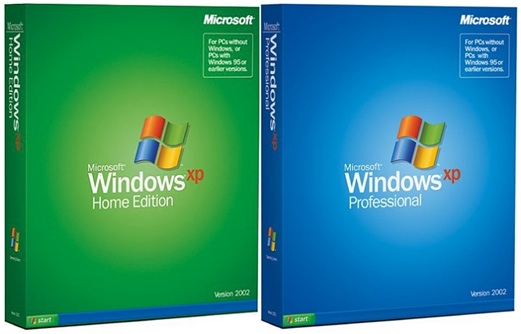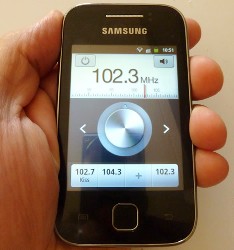This ad sets the closure date for April 8th 2014, less than a year, thus XP will become a system even more open to hacker attacks. Who, by the way, have benefitted from the existing security failures in every WINDOWS system, particularly from XP updates and service packs.
The most recent statistics have confirmed that nearly a third of the PC desktops continue to use WINDOWS XP, especially the older computers with technological limitations which prevent them from using any systems subsequent to XP.
Although the same companies that test the market admit that Windows 7 has superseded XP in the so called market share after an extended and expensive advertising campaign by Microsoft, the investment carried out by the Bill Gates’ monopoly is justified since the first XP version was launched onto the market in October 2001.
All computers still running XP is a market segment from which Microsoft cannot get a coin from its burdensome and restrictive licenses.
Consequently, the press release was issued in Redmond, Washington State, setting April 8th as the official date on which XP will stop having “support” from Microsoft.
The fact that WINDOW XP is still working today after 12 years on the market in its first version (full of security flaws and many other deficiencies) is an excellent sign of the lack of spreading information about the existence of other FREE systems, yes, without any cost for the user and much safer, based on free software applications and open source codes.
Those who are using or have used Microsoft “products” in general, and its operating systems in particular, have lived and live in constant worry about the release of the latest security patch issued from Microsoft Headquarters, almost always sometime after the existence of a new vulnerability in the internet has been detected.
The use of proprietary operating systems and of course of closed source codes, increases the danger and vulnerability, since hackers are significantly motivated due to the level of access to the market achieved by systems like WINDOWS XP, installed, I repeat, in almost every computer classified as desktops, laptops and notebooks.
An analytical review of WINDOWS XP leads us into a list of several hundred security updates of great impact, as well as many others less significant, but open to hacker exploitation.
So, the question is:
Having today, instead of one but several safe and reliable LINUX free or low cost distributions, what are those who use XP waiting for, to migrate to LINUX?
Then, some readers may ask the following question: Do all the free operating systems and open source codes manage to implement all the services including WINDOWS graphics interface and other exclusive systems?
The answer is a categorical YES
Let WINDOWS XP die a natural death, and let’s once and for all take the safest and healthiest path to LINUX distributions, much less vulnerable and these days really user friendly.
Translated by ESTI
Normal
0
21
false
false
false
ES
X-NONE
X-NONE
MicrosoftInternetExplorer4
The Microsoft Corporation has published an advertisement on its website, warning about the official date on which they will stop issuing updates (especially those related to security) for the WINDOWS XP system.
This ad sets the closure date for April 8th 2014, less than a year, thus XP will become a system even more open to hacker attacks. Who, by the way, have benefitted from the existing security failures in every WINDOWS system, particularly from XP updates and service packs.
The most recent statistics have confirmed that nearly a third of the PC desktops continue to use WINDOWS XP, especially the older computers with technological limitations which prevent them from using any systems subsequent to XP.
Although the same companies that test the market admit that Windows 7 has superseded XP in the so called market share after an extended and expensive advertising campaign by Microsoft, the investment carried out by the Bill Gates’ monopoly is justified since the first XP version was launched onto the market in October 2001.
All computers still running XP is a market segment from which Microsoft cannot get a coin from its burdensome and restrictive licenses.
Consequently, the press release was issued in Redmond, Washington State, setting April 8th as the official date on which XP will stop having “support” from Microsoft.
The fact that WINDOW XP is still working today after 12 years on the market in its first version (full of security flaws and many other deficiencies) is an excellent sign of the lack of spreading information about the existence of other FREE systems, yes, without any cost for the user and much safer, based on free software applications and open source codes.
Those who are using or have used Microsoft “products” in general, and its operating systems in particular, have lived and live in constant worry about the release of the latest security patch issued from Microsoft Headquarters, almost always sometime after the existence of a new vulnerability in the internet has been detected.
The use of proprietary operating systems and of course of closed source codes, increases the danger and vulnerability, since hackers are significantly motivated due to the level of access to the market achieved by systems like WINDOWS XP, installed, I repeat, in almost every computer classified as desktops, laptops and notebooks.
An analytical review of WINDOWS XP leads us into a list of several hundred security updates of great impact, as well as many others less significant, but open to hacker exploitation.
So, the question is:
Having today, instead of one but several safe and reliable LINUX free or low cost distributions, what are those who use XP waiting for, to migrate to LINUX?
Then, some readers may ask the following question: Do all the free operating systems and open source codes manage to implement all the services including WINDOWS graphics interface and other exclusive systems?
The answer is a categorical YES
Let WINDOWS XP die a natural death, and let’s once and for all take the safest and healthiest path to LINUX distributions, much less vulnerable and these days really user friendly.
Translated by ESTI




